Ireland & Britain
England & Scotland
Travel Stories
Interests & Hobbies
Outdoors & Activities
Advice for Visitors
About My Ireland Tour
News & What's On

The ancient landscape of Ireland's East tells the story of education, love and religion. The Rock of Dunamase was a wedding present given by Lord Strongbow to Aoife, the King of Leinster's daughter. The monastic site of Glendalough is known as one of Ireland's first schools of learning. Clonmacnoise Monastery stands as a reminder of what was once a major centre, not only in Ireland but throughout Europe, of religion, learning and trade.
Here we take a look at the most popular castles, ruins and ancient sites in Dublin and around Ireland's Eastern counties.
Trim Castle is the largest Anglo-Norman castle in Ireland. Hugh de Lacy and his son Walter built it over a 30 year period, finished in 1206.
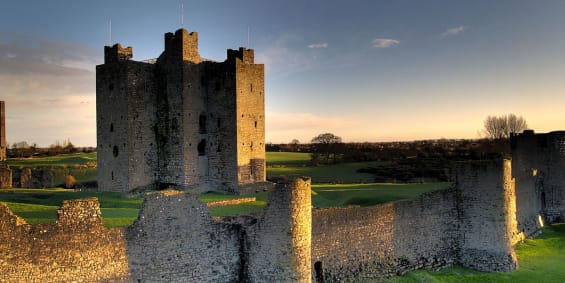
The castle is a 30-minute drive from Dublin and parking is free on Sundays. On other days, a small charge of a few Euro applies.
Perhaps best known internationally as an outdoor rock/pop music venue, the open-air castle grounds and the main building (serving as a studio) have played host to the likes of U2, The Rolling Stones, Bob Dylan, Bruce Springsteen, Guns 'n' Roses, Red Hot Chilli Peppers, David Bowie, Queen and REM.
But U2's Unfortgettable Fire is not the only conflagration to have left its mark here. Following a major blaze in 1991, the iconic castle building was closed for restoration until a full decade later.
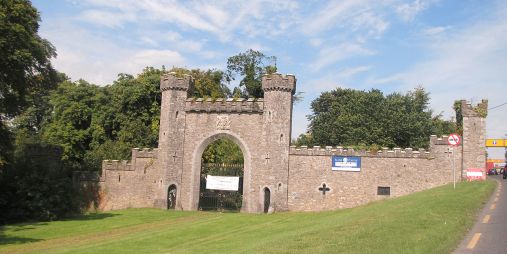
Today, guided tours of the castle are popular with visiting tourists who enjoy the famous whiskey tasting here as much as the legendary interiors and ancient ramparts.
On a sunny day, pack a picnic and enjoy a restful lunch in the outdoor seating provided on the riverbank.
An ancient monastic settlement, Glendalough (meaning: Valley of the Two Lakes) presents today's visitors with a chance to walk not only through the idyllic hills of Ireland's East, but also through the rough-hewn landscapes of ancient Irish history. Founded in the Sixth century by St. Kevin, who as a boy was sent to Glendalough where he later returned to found the monastery. His writings, which include the fighting of "knights" at Glendalough, are today understood to mean St. Kevin fighting his own personal temptations. As his fame grew within holy circles, so too did his followers. After St. Kevin's death in 618, the monastery prospered over the following six centuries. At its zenith, Glendalough was one of the most powerful religious centres in Europe.
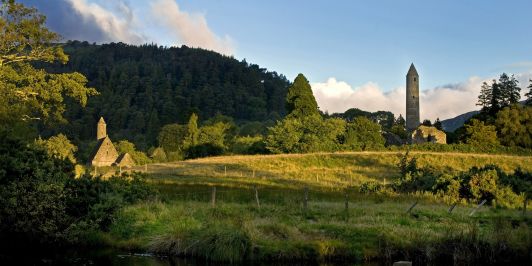
The Irish annals, a chronicle of Irish history, contain mentions of raids on the settlement and the deaths of its abbots. By the start of the Fifteenth century, this stronghold was in decline but the stone monuments and buildings remain as evocative and powerful today as they surely must have been then. In 1042, the second-longest Viking longship ever recorded was built using oak timber from Glendalough. Today, there is a replica of the ship, built in 2004, in Roskilde, Denmark. Glendalough is a destination on many of our tours of Ireland.
If you're feeling extra adventurous, there's a scenic walk that gets you to Glendalough in about 15 minutes. You can park at the Glendalough Woollen Mills in Laragh and take the forest walk that leads behind the mills. See here for more information about parking in and around Glendalough.
The visitor centre car park may be closed early in the morning or late in the evening, but you can access the monastic site and lakes at any moment of the day all year round. Find out more about the opening hours of Glendalough Visitor Centre.
There is no admission fee to visit the monastic site or the lakes however, there are parking charges for the Visitor Centre car park and an admission fee for the Visitor Centre.
A thousand years older than Stonehenge, Bru na Boinne is a huge Neolithic necropolis, built to house the bodies of the social elites who ruled this region of ancient Ireland. Covering a large area, Bru na Boinne is perhaps best known for three main sites - Newgrange, Knowth and Dowth (Dowth is closed to tourists). A must-see on any Ireland Tour. As well as being older than Stonehenge, Newgrange is also older than the Egyptian Pyramids. It is made up of roughly 200,000 tonnes of rock and other materials. At its widest point, it reaches 279 feet. Built between 3200 and 3100 BC, the majority of the 547 slabs that form the inner passage are thought to have come from sites 5 km away and some coming as far as 20 km away.
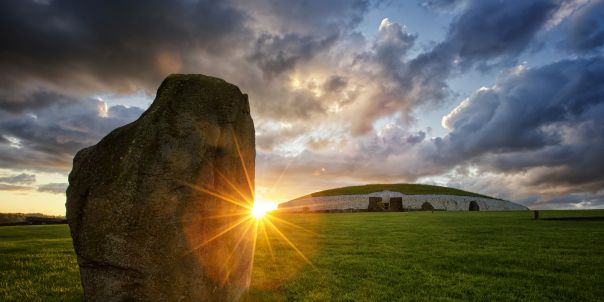
Archaeologists believe that Newgrange would have taken the local Neolithic people a minimum of 30 years to finish. The original purpose of the structure is not clear. Some believe that it was used for burial purposes while others believe that it was used solely as a place of worship. Another theory is that, as the Neolithic people were sun worshippers, and the sun's rays are perfectly captured through the passageway on the shortest day of the year (the Winter Solstice), Newgrange was built as a way of paying homage to the sun.
The exhibition at the Bru na Boinne Visitor Centre tells the history of Newgrange, Knowth and Dowth. You will find a full-scale replica of the chamber of Newgrange here and a full model of a smaller tomb at Knowth. The visitor centre has recently received a major update.
Be warned that tours of Newgrange and Knowth are limited to 750 places per day, while Bru na Boinne as a whole attracts nearly three times this number during peak season. Arrive early or visit midweek. There is an online booking system for groups with 14 or fewer people.
You can enter a free lottery to win a chance to witness the sunrise on winter solstice between December 18 and 23 by filling out a form at the visitor centre.
All visits to Newgrange and Knowth start at the Bru na Boinne visitor centre, where a shuttle-bus service will collect you and take you to the most important sites. The world heritage site is about a 45-minute drive from Dublin. We recommend you to allow plenty of time for a visit to the visitor centre (1 hour) and Newgrange (2 hours). The monuments themselves are outdoors, so be sure to check the weather and dress appropriately.
To find out more details regarding the opening hours please have a look at their website.
A visit to the visitor centre combined with a tour of the Newgrange Chamber will cost €18 per adult, €12 for children up to 17 and children under 12 go free. Tickets for seniors are €16 and a family ticket (2 children & 2 adults) is €48.
Organised day tours to Newgrange, Hill of Tara and Knowth are available departing from Dublin in the morning and returning to Dublin in the late afternoon. Booking Mary Gibbons Tour will let you skip the line and guarantee access to the monuments of Newgrange and Knowth. A seat on the bus will cost €45 per adult.
Perched on the banks of the River Shannon, Clonmacnoise is perhaps the foremost of Ireland's many monastic cities. For those interested in early Christianity, it is a must-see destination. Enclosed within the ancient city walls are various ecclesiastical ruins including a cathedral, seven ancient churches, three high crosses, round towers and the largest collection of Early Christian grave slabs in Western Europe - all remarkably well-preserved and fascinating to anyone, not just those with a special interest in Ireland's religious history.
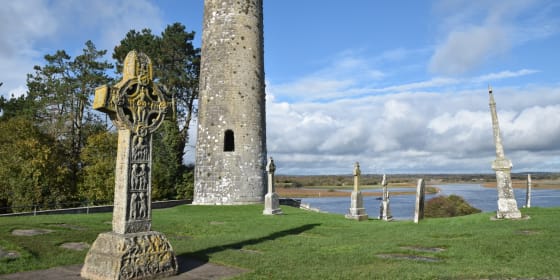
The cathedral is perhaps the most logical starting point after the museum. Built in 909AD, it has been significantly altered over the years. The 15th Century Gothic doorway with carvings of St Francis is worth a few minutes of closer scrutiny.
Clonmacnoise's small churches are known as temples; a derivation from the Gaelic teampall. Each has its own distinctive character, and states of preservation vary significantly. Giving each of these sites the attention they deserve, not to mention the many sites outside the city walls, will not be easy for those bringing young families. But, for grown-ups interested in history, Clonmacnoise is a fascinating and vivid realisation of Ireland's past.
Head for the museum first, an interactive multimedia experience housed in three conical huts designed to mirror the early dwellings of the region.
You can also travel down to Clonmacnoise by boat from Athlone. Viking tours run boat journeys to Clonmacnoise and bus transfers back to Athlone.
The average duration of a visit to Clonmacnoise is around an hour and a half. Guided tours in different languages are available. The audiovisual presentation in the museum lasts 20 minutes and provides important context for the rest of your time in Clonmacnoise. The museum also houses the largest collection of early Christian grave slabs in Europe and the original high crosses.
Open from 9:00 to 18:30 from June to August, from 10:00 to 18:00 in mid-March to May, September & October and from 10:00 to 17:30 in November to mid-March.
An entry ticket costs €8 for an adult and €4 for a child.
The Hill of Tara was once the seat of the High Kings of Ireland. According to legend, a quarter of all the landscape of Ireland can be seen from atop the hill and, at one time, every road in Ireland led there. Before it was used by the High Kings of Ireland, archaeologists believe that the focus of the area was a Neolithic passage tomb, dating back to 3,200 BC. The inauguration stone of the King of Tara, known as the Stone of Destiny, still stands today, in an area known as The Royal Seat.
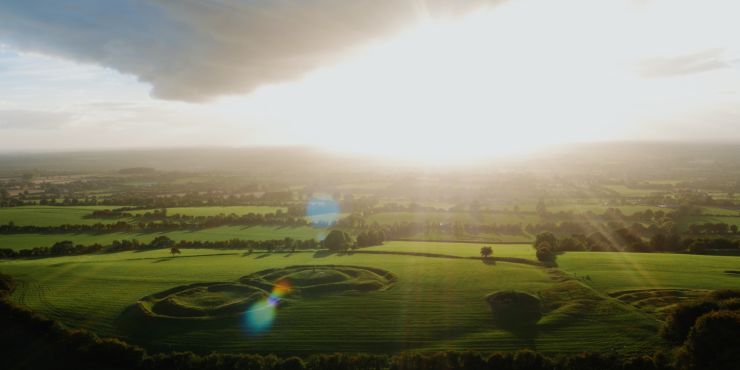
The Battle of Tara, which took place on the 26th of May 1798, saw the United Irishmen & Defenders suffer a heavy defeat at the hands of government forces. Two headstones on the hill commemorate the battle.
From 1899 to 1902 the land around the Hill of Tara was extensively excavated by a group known as the British Israelites. The excavations resulted from the group's belief that the Holy Covenant was buried there, based on a connection between the Bible, Ireland and Egypt. Nothing of interest was found.
As the hill itself and the area surrounding it can be rather rugged and unkempt, it is advisable to bring a good pair of walking shoes. There are certain beaten tracks to take, but to get the best views from the hill or to just head off-road a bit, it's best to have decent footwear.
Recommended duration of a visit to the Hill of Tara is between 1 and 2 hours.
There is no admission fee to access the Hill. However, admission to the visitor centre with a guided tour is €5 for an adult and €3 for a child. A guided tour will help you get a deeper understanding of the archaeological site and its history.
Visitors who set off in search of ramparts and turrets are likely to walk past Dublin Castle in search of something more medieval-looking. So, be warned that there won't be jousting and suits of armour. For 700 years, the bastion of British rule in Ireland, the castle is really a Victorian architectural mish-mash, and wouldn't look out of place in London or Paris.
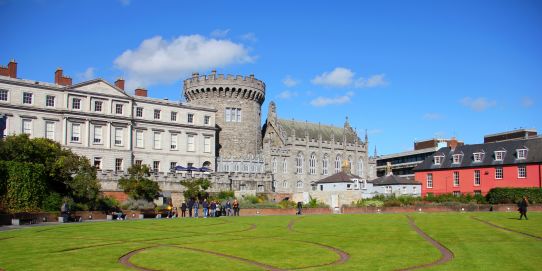
This is perhaps one of the more sedate attractions you'll find set against Dublin's bustling backdrop, and it's certainly not a day out for the kids, but the 45-minute tours are frequent and informative. A visit to the castle will appeal to anyone who has a keen interest in Irish history.
Especially for visitors following a tour guide for one quick 'lap', Dublin Castle will be more of a short visit than a full day out.
Use the free Wi-fi access in the Castle to download the Dublin Castle app.
The castle grounds and gardens are free to explore. A self-guided guided visit to the State Apartments is available and takes about 40 minutes. Guided tours are also available. You can get a brochure in 17 different languages or download the free Dublin Castle app.
Open 7 days a week from 9.45 to 17.45, with last admission a half-hour before closing.
Leap Castle is privately owned by Irish musician, Sean Ryan, who has been restoring the property since he bought it in the early 1990s. Said to be haunted by a sadistic chieftain, the original 16th century fortress is mostly ruins. But the Ryan family have filled the main house with historical artefacts from around the globe, providing a fascinating basis for the rich and informative tours which Sean is happy to offer in person.
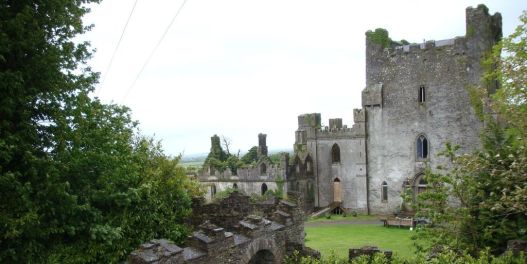
This may be among Ireland's more eccentric castle tours but very few guests leave disappointed, having received a warm Irish welcome into what is ultimately a private family home.
Leap Castle is a private home under restoration. There is no gift shop and no cafeteria so bring anything you need.
Rock of Dunamase has a rich, many-layered history. Believed to have been first settled by Christians in the Sixth Century, it was invaded by Vikings in 842AD. The Tenth and Eleventh Centuries then saw the site lie vacant before the castle, whose ruins crown the Rock today, was built in the second half of the Twelfth Century.
If a fascinating history brings first-time visitors here, it's the amazing views that bring them back. The hilltop location presents a series of stunning panoramas which, on a clear day, are truly breathtaking.
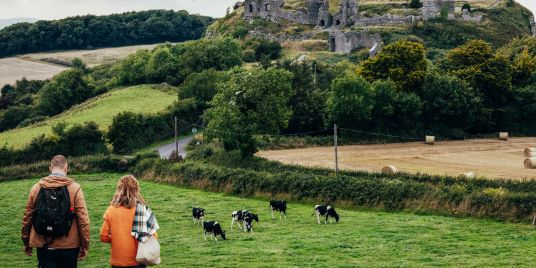
Amateur photographers will be glad they packed their cameras in a location which is a dream for anyone with an eye for a creative shot.
This hilltop location is quite exposed so, during the cooler months of the year, be sure to pack an extra layer to keep warm.
Visitors to Loughcrew Cairns will be glad they put on their walking boots and climbed up to find these ancient neolithic burial chambers that seem to reach skyward from their hilltop location. The burial chambers date back to 3300BC and feature stone carvings as well as rock paintings.
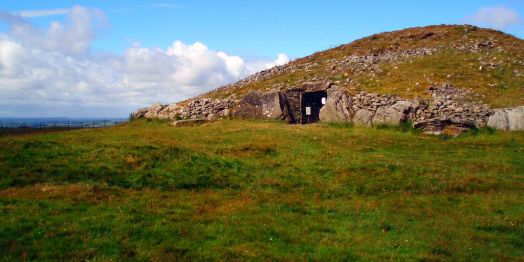
Those looking to connect with the spirituality of this ancient site will be struck by how much quieter it is than Newgrange, its more tourist-friendly cousin. For everyone else, the quiet here is still very much a positive as you drink in the stunning views on offer here.
For a pleasant detour, be sure to stop at Loughcrew Estate and Gardens, just five-minutes' drive away.